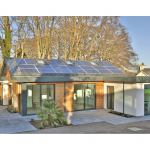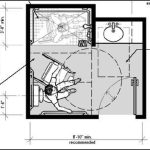What is an Accessible Home?
An accessible home is a living environment designed and modified to accommodate individuals with disabilities or mobility limitations. It includes features and design elements that aim to eliminate barriers, improve usability, ensure safety, and promote independence for individuals with diverse abilities.
Design Considerations for an Accessible Home
Taking into account the unique needs of the residents and the characteristics of the home is vital for the success of an accessible remodel project.
When it comes to creating an accessible home, the specific modifications and design elements will differ based on individual needs. However, there are some common design considerations to keep in mind:
- Entrance and Mobility: An accessible home commonly features a level entrance or a ramp to provide easy entry for wheelchair users or individuals with mobility aids. It may also include wider doorways and hallways to accommodate wheelchair passage.
- Circulation and Layout: The layout of an accessible home is designed to allow for easy movement and maneuverability throughout the space. Clear pathways, open floor plans, and minimal obstructions help individuals with mobility challenges navigate freely.
- Adapted Bathrooms: Accessible bathrooms frequently include roll-in showers or walk-in bathtubs equipped with grab bars, adjustable showerheads, and accessible toilet facilities. These modifications enable individuals with mobility limitations to use the bathroom independently and safely.
- Kitchen Accessibility: An accessible kitchen incorporates lower countertops, reachable storage, and easily operated appliances. This allows individuals with limited mobility or wheelchair users to access and use the kitchen space effectively.
- Flooring and Surfaces: Flooring materials in an accessible home are typically slip-resistant to minimize the risk of falls. Smooth and even surfaces without abrupt level changes help individuals with mobility aids move around comfortably.
- Lighting and Visibility: Adequate lighting is crucial in an accessible home to enhance visibility and reduce hazards. Well-placed lighting fixtures and natural lighting sources help individuals with visual impairments navigate the space more easily.
- Grab Bars and Handrails: These fixtures are strategically installed throughout the home, particularly in bathrooms, stairways, and hallways. They provide support and stability for individuals with mobility challenges.
- Accessibility Technology: Integrating assistive technologies like voice-controlled systems, smart home automation, and accessible communication devices can greatly enhance the independence and accessibility of the home for individuals with disabilities.
- Safety Features: An accessible home prioritizes safety by incorporating features such as non-slip flooring, fire safety measures, accessible emergency exits, and appropriately placed electrical outlets and switches.
The objective of an accessible home is to create a comfortable, safe, and inclusive living environment that enables individuals with disabilities or mobility limitations to live with increased independence and dignity. And by incorporating universal design principles into the concept of an accessible home, it can become a welcoming, functional, and adaptable space for all, regardless of abilities or circumstances.
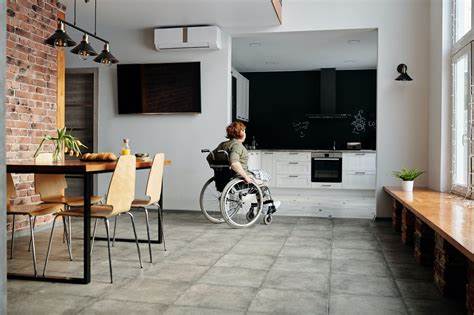
Where to Begin with an Accessible Home Remodeling Project
Drawbacks of Bypassing Accessible Design
Bypassing accessible design can have limitations and drawbacks in-home projects. Failure to consider accessibility can lead to a home renovation that limits mobility, poses navigation challenges, compromises safety, and reduces usability for individuals with disabilities or aging. And overlooking accessible design principles may lead to costly construction redo if solutions fail long-term needs. This can also limit the property’s market value and appeal. Home building projects, especially accessible remodels, require the expertise of multiple specialists for success.
Recognizing Contractor Limitations in Accessible Construction
Embarking on an accessible home remodel project spearheaded by a contractor can present challenges and drawbacks. Contractors, while skilled in construction, generally lack specialized expertise in design or a comprehensive understanding of accessibility. This can lead to variations in proposed approaches, making it difficult to determine if the solution will meet your long-term needs. This inconsistency makes it challenging to make informed decisions and select the most suitable design options. Potential issues or rework may arise if the chosen approach doesn’t address accessibility requirements. Contractors often lack a deep understanding of health needs and their relation to accessible design.

Challenges of Conventional Interior Design for Accessibility
Typical interior design companies prioritize aesthetics and functionality in a space. An interior designer selects materials, furnishings, and design elements to create visually appealing and functional interiors based on client preferences and industry standards. Despite their ability to create visually appealing interiors, they often lack a specialized understanding of health needs and accessibility considerations for inclusive or universal design. The focus on visual appeal may cause them to overlook essential accessibility features. They may not fully comprehend the diverse needs of individuals with disabilities or possess adequate knowledge of assistive technologies.
To ensure a successful and inclusive remodel, it is crucial to engage professionals with expertise in accessible design and universal design principles. By collaborating with these specialists, homeowners can overcome the challenges associated with conventional interior design and create an accessible home that truly meets their needs.
Residential Architects and Accessibility Remodeling
When considering an accessible remodel or addition project, involving an architect is a natural choice. Architects bring valuable strengths to enhance the project. Their architectural design expertise includes structural design, building codes, and construction knowledge. They ensure a solid and compliant foundation. Their ability to envision the big picture and translate client needs into functional designs is invaluable.
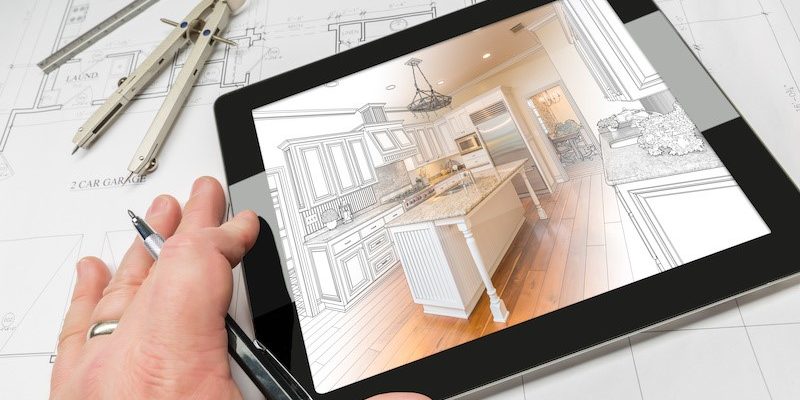
However, while architects play a significant role in home building, their expertise may not align with the specialized needs of accessible or aging in place design.
Relying solely on a residential architect for an accessible design project has limitations. These include their limited expertise in accessibility products and assistive technologies, potential gaps in knowledge of accessibility guidelines, challenges in collaboration, and potential oversight of clients’ healthcare needs and their connection with home accessibility. Thoroughly understanding the impact of accessible design on the overall well-being of individuals with specific medical conditions or disabilities is crucial, as it involves considering health-related considerations and their direct implications.
Finding the right partner who understands your accessibility needs and navigating the uncertainty of involving an architect in your residential construction project can be a challenging task. How can you ensure a detailed design that achieves the home accessibility you require? While collaborating with a residential architect is often essential for larger home renovations, determining their necessity may not always be clear. This is where considering the expertise of an accessibility consultant and design company specialized in inclusive and universal design becomes invaluable.
For a truly holistic and effective approach to accessible interior design, it becomes imperative to involve an accessibility consultant who understands the intersection of healthcare needs and home accessibility. Before delving into the benefits and insights provided by an accessibility consultant to ensure a comprehensive and successful outcome, it is important to examine in greater detail the role of a residential architect in your accessible design remodel project.
Demystifying Architect Involvement
The requirement for a residential architect in a remodel or addition project can vary based on local regulations. In many jurisdictions, involving an architect is mandatory by law under certain criteria. These criteria depend on the scope and scale of the project. For instance, if structural changes, major alterations to the building’s footprint, or modifications to load-bearing walls are involved, an architect’s involvement may be required. Additionally, compliance with specific zoning regulations or building codes may necessitate the services of a residential architect.

Navigating Building Codes and Regulations
Building codes and regulations can be complex, confusing, and overwhelming for most homeowners. However, residential architects are well-versed in these laws and can help navigate them with ease. They know what permits are necessary for specific projects, how to meet safety requirements, and how to ensure architectural solutions for universal design. With an architect’s guidance, homeowners can avoid costly mistakes that could result in fines or legal issues.
It’s important to understand your project’s specific needs clearly. Consult with local authorities or building departments to determine the specific requirements for your project and whether an architect’s involvement may be necessary to adhere to regulations and laws. This is daunting for many. Understandably, this opens more questions and requires clarification.
Misconceptions about Architects
When it comes to creating an accessible living space through home building or remodeling projects, there are often misconceptions about the role of architects.
Some may believe a residential architect is only necessary for large-scale commercial projects or extravagant mansions. However, the truth is that residential architects offer practical services that can greatly benefit any homeowner, particularly those seeking to create an accessible home.
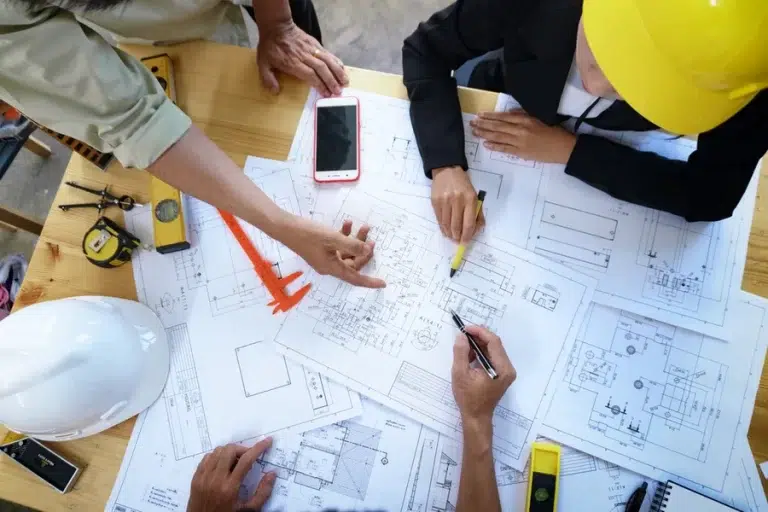
Here are some common misperceptions about residential architects:
- Architects are not necessary for residential projects: Again, there is a misconception that architects are primarily needed for commercial or institutional projects and not residential properties. However, architects can bring significant benefits to residential projects, especially those involving structural changes, additions, or complex design challenges. They can ensure that the project meets safety standards, complies with regulations, and maximizes the potential of the space.
- Needing an architect for every project: While residential architects bring valuable expertise, not every home improvement project requires involvement. Simple modifications or cosmetic updates, such as repainting walls, replacing fixtures, or installing new flooring, can often be handled by homeowners or a home accessibility remodeling company without needing an architect’s services.
- Architects only focus on aesthetics: Another misconception is that architects are solely concerned with the visual aspects of a project. While aesthetics are an important consideration, architects bring a multidimensional approach that includes functionality, spatial optimization, structural integrity, and compliance with building codes and regulations.
- Architects are unaffordable: Some people believe that architects are too expensive and only suitable for high-budget projects. However, the cost of engaging a residential architect can vary depending on the scope and complexity of the project. Moreover, architects can help optimize the design to maximize the available budget and provide long-term value through barrier-free home renovations and modifications with increased property value.
- Lack of understanding of specialized needs: Some individuals may assume that residential architects have a comprehensive understanding of specialized needs, such as home accessibility or aging in place. Although architects receive training in these areas, their expertise may not be as specialized as that of an accessibility consultant or accessible design remodeling company. These professionals have a specific focus on creating inclusive designs and functional environments for individuals with disabilities or specific health requirements.
- ADA compliance and architects: Many assume architects are needed to ensure ADA compliance. But it is important to note that ADA accessibility requirements are not mandatory for residential homes. Since accessible design remodeling companies and accessibility consultants are experts, they offer valuable insights and recommendations that allow homeowners to go beyond solely relying on architects, who may lack specialized expertise in ADA guidelines and accessible design.
When Do You Need to Involve an Architect?
Let’s consider two scenarios to illustrate when it’s necessary to involve an architect in your project. In the first scenario, a master bathroom remodel aims to transform the space without altering or removing walls. The goal is to relocate the shower, vanity, sink(s), and toilet to create a new layout that better suits the homeowner’s needs. This project requires specialized knowledge but typically doesn’t necessitate an architect. Instead, working with an experienced accessible design consultant and remodeling company can effectively address the accessibility needs and achieve a successful outcome.
Now, let’s consider an alternative scenario. Picture a project involving the creation of a new master suite on the main floor of a home. This endeavor requires relocating load-bearing walls and making significant structural changes. Similarly, adding a new in-law suite for aging in place entails substantial modifications and new construction. These types of projects demand the involvement of a residential architect. Their expertise ensures the safety and integrity of the building while bringing the design vision to life. By recognizing the scope and complexity of your project and seeking guidance from an accessible design professional, you can make an informed decision about whether an architect’s involvement is necessary to achieve your goals. In this case, collaborating with an accessible remodeling team that includes an architect ensures the best outcome for your project.
Beyond the Average: Accessible Design Professionals
When creating accessible and inclusive living spaces, it’s important to recognize that average accessibility standards often fall short of meeting the unique needs of disabled individuals. This is especially true for wheelchair users, individuals with mobility impairments, or those with other specific needs.
To bridge this gap, accessibility consultants and accessible design and remodeling companies offer valuable expertise.

By collaborating with or employing residential architects when needed, these professionals bring specialized knowledge and a comprehensive approach to your project.
Engaging with an accessible design company or consultant who thoroughly understands health needs is crucial. It allows you to navigate the complexities of your project more effectively, resulting in a space that not only meets accessibility standards but also enhances your overall well-being. By integrating accessibility considerations from the start, they harmoniously blend functionality and aesthetics in the design process.
What is a Home Accessibility Consultant?
A home accessibility consultant is a professional who specializes in assessing and improving the accessibility of physical spaces, products, and services. They provide expertise and guidance to individuals to ensure compliance with accessibility standards and create inclusive environments for people with disabilities or those who are living with chronic conditions or planning to age in place. Home accessibility consultants have a deep understanding of relevant regulations, guidelines, and best practices related to accessibility.
What is an Accessible Design Company?
An accessible design company, or an accessible design remodel company, specializes in creating accessible and inclusive living spaces, products, or services. They have a team of experts with diverse backgrounds, including architects, interior designers, engineers, and accessibility specialists. Collaborating with clients, they design and execute projects that cater to individuals with disabilities, meeting their specific needs. These companies may offer consulting services, accessibility audits or assessments, and project management to ensure the successful achievement of accessibility goals.
Both accessibility consultants and accessible design companies aim to promote inclusivity, offer barrier-free options, and enhance the user experience for individuals with disabilities. They work towards creating universal design environments and solutions that are usable, safe, and accommodating for everyone, regardless of their abilities.
The Accessible Remodeling Company's Role in Managing a Home Build Project
By understanding the benefits of working with an accessible design company or engaging in accessibility consulting, homeowners can make informed decisions to achieve their accessibility goals while ensuring a comprehensive and inclusive living space. Collaborating with these professionals offers several advantages, as they can manage an architect’s involvement, as needed, and oversee the entire project. This streamlined approach ensures a smooth process for homeowners seeking an accessible remodel or addition. The benefits include:

- Specialized expertise: These professionals possess extensive knowledge of accessibility requirements, universal design principles, and specific health needs. They create tailored solutions for individuals with disabilities, aging in place, and unique requirements.
- Seamless coordination: As central coordinators, they streamline communication between homeowners, architects, contractors, and specialists. They save time, effort, and stress by managing multiple parties involved in the project.
- Holistic approach: Overseeing the entire project, they integrate accessibility features seamlessly into the design. They address structural aspects and finer details, including layout optimization, finish selection, and incorporating assistive and home technologies.
- Cost-effective solutions: These experts optimize resources effectively, working within budgets to provide cost-effective design solutions. They suggest alternative options and strategies that balance functionality and affordability.
- Peace of mind and advocacy: Accessible design companies and consultants prioritize homeowners’ needs, ensuring a smooth, regulated process and well-designed, functional living space. They advocate for the homeowner’s best interests throughout the project.
Responsibilities of an Accessibility Consultant or Accessible Design Company
The role of an accessibility consultant or accessible design remodel company is to bring specialized knowledge, experience, and expertise in creating accessible and inclusive living spaces.
They are crucial in guiding homeowners through the process, ensuring their specific accessibility needs are met. Their expertise creates a functional, aesthetically pleasing, and barrier-free environment.
These experts also work closely with architects, contractors, and other design professionals to ensure that accessibility requirements and universal design principles are integrated seamlessly into the project. Some key responsibilities of an accessibility consultant or accessible design remodel company include the following:
- Assessing Accessibility Needs: They conduct a thorough assessment of the homeowner’s specific accessibility needs and requirements. This involves considering factors such as mobility limitations, assistive devices, and health-related concerns.
- Recommending Design Solutions: Based on the assessment, they recommend solutions that address the identified accessibility needs. This includes suggesting modifications, layout optimizations, assistive technologies, and other elements to improve accessibility and functionality.
- Collaborating with the Design Team: They work collaboratively with or employ architects, designers, and contractors to ensure that accessibility features are effectively incorporated into the overall design. This involves providing expertise, guidance, and detailed recommendations throughout the design and construction phases.
- Compliance with Accessibility Standards: They have a deep understanding of accessibility guidelines and regulations, such as the Americans with Disabilities Act (ADA). They ensure the project complies with or follows the best practices of relevant accessibility standards, codes, and regulations.
- Project Coordination: They act as project coordinators, facilitating effective communication between the homeowner, architects, contractors, and specialists. They ensure that the project progresses smoothly and that accessibility requirements are met at each stage.
- Detailing Accessibility Features: They provide detailed specifications for accessibility features, such as the placement of grab bars, selection of finishes, and optimization of space for ease of use. They pay attention to even the minutest details to ensure a comprehensive, accessible design.
- Optimizing Resources: They work within budget constraints to provide cost-effective design solutions. They suggest alternative options and strategies that balance functionality, aesthetics, and affordability.
- Advocacy for Homeowners: They prioritize the homeowner’s needs and act as their advocates throughout the project. They ensure the project aligns with the homeowner’s goals, preferences, and accessibility requirements.
The Importance of Finding the Right Design Team
Your relationship with your design team is personal and requires effective communication. It also necessitates a deep understanding of your needs and health-related concerns, particularly about aging in place or living with a chronic condition.
It is the accessible design expert that delves into the finer details that architects may not always prioritize. They excel at understanding the specific health needs of individuals and the intricate requirements for accessibility. This includes detailing the placement of grab bars, selecting appropriate finishes, and optimizing the layout for ease of use.
Working collaboratively with other design experts, accessible design professionals enhance the vision, seamlessly integrating accessibility features while maintaining aesthetics and functionality. If the project scope requires it, architects provide a strong foundation, complementing the specialized knowledge and understanding of health needs brought by accessibility professionals.
Collaboration between accessible designers and architects brings a comprehensive approach to a project. This ensures that every design aspect, including structural considerations and the smallest details, creates a truly accessible and inclusive living space.
Tips for Choosing Your Accessible Remodel Team
- Research and gather recommendations: Start by researching design companies or professionals specializing in accessible design and remodeling. Look for recommendations from friends, family, or trusted sources, and read reviews or testimonials from previous clients. This will give you a better understanding of their capabilities and reputation.
- Assess their expertise: Ensure the design team has experience in accessible design and remodeling projects. Look for evidence of their expertise, such as certifications, specialized training, or past projects demonstrating their understanding of accessibility requirements and universal design principles. For example, the National Association of Home Builders (NAHB) offers a credential for Certified Aging in Place Specialists (CAPS).
- Check for proper licenses and insurance: Verify that the design team has the licenses and certifications required by local authorities. Additionally, ensure they carry appropriate insurance coverage to protect you and your property during the project.
- Communication and collaboration: Effective communication is crucial in any design project. Assess the design team’s communication style and how they listen to your needs and concerns. Look for a team that values collaboration, involves you in the decision-making process, and keeps you informed about project progress.
- Compatibility and rapport: Choose a design team you feel comfortable working with, as the remodeling project may involve ongoing interactions. Trust your instincts and ensure a good rapport between you and the design team members.
Navigating the Process of Incorporating Accessibility Features
Collaboration and effective communication with the design team are key to achieving a successful remodel project that incorporates accessibility features. By following the tips below and actively participating in the process, you can create a living space that truly meets your accessibility needs.
- Identify your specific accessibility needs: Begin by identifying the accessibility features that are essential for your living space. Consider factors such as mobility limitations, assistive devices, and any specific health requirements. This will help you communicate your needs effectively to the design team.
- Research accessibility guidelines: Familiarize yourself with relevant standards like the Americans with Disabilities Act (ADA) standards or universal design principles. This knowledge will enable you to have informed discussions with the design team.
- Collaborate with the design team: Work closely with the design team to develop a comprehensive accessibility plan. Share your specific requirements and vision for the space with your design team. Encourage open dialogue to explore various design options that address accessibility needs while maintaining functionality and aesthetics.
- Prioritize key accessibility features: Identify the key accessibility features that are most important to you and communicate them clearly to the design team. This will help them allocate resources and prioritize design decisions accordingly.
- Consider future needs: Anticipate potential future needs and incorporate flexibility into the design. Aging in place often requires adapting the living space over time. Discuss with the design team how the space can be designed to accommodate potential changes and ensure long-term usability.
Accessible Design, Consulting, and Remodel
At Live in Place Designs, we specialize in accessible remodels, additions, and complex home building projects. Our approach starts with a comprehensive design assessment, working closely with you to identify and prioritize your accessibility needs. Throughout the project, this assessment serves as a guideline, ensuring every aspect exceeds your expectations. We advocate for your accessibility and health-related needs, ensuring the design vision is effectively executed. With expertise in specialized accessibility and aging-in-place design, we address unique challenges architects may face without the support of an accessible design team. Our commitment is to understand your needs and create a living space that meets your requirements and enhances your well-being.
Learn more about our accessible design remodel services.



